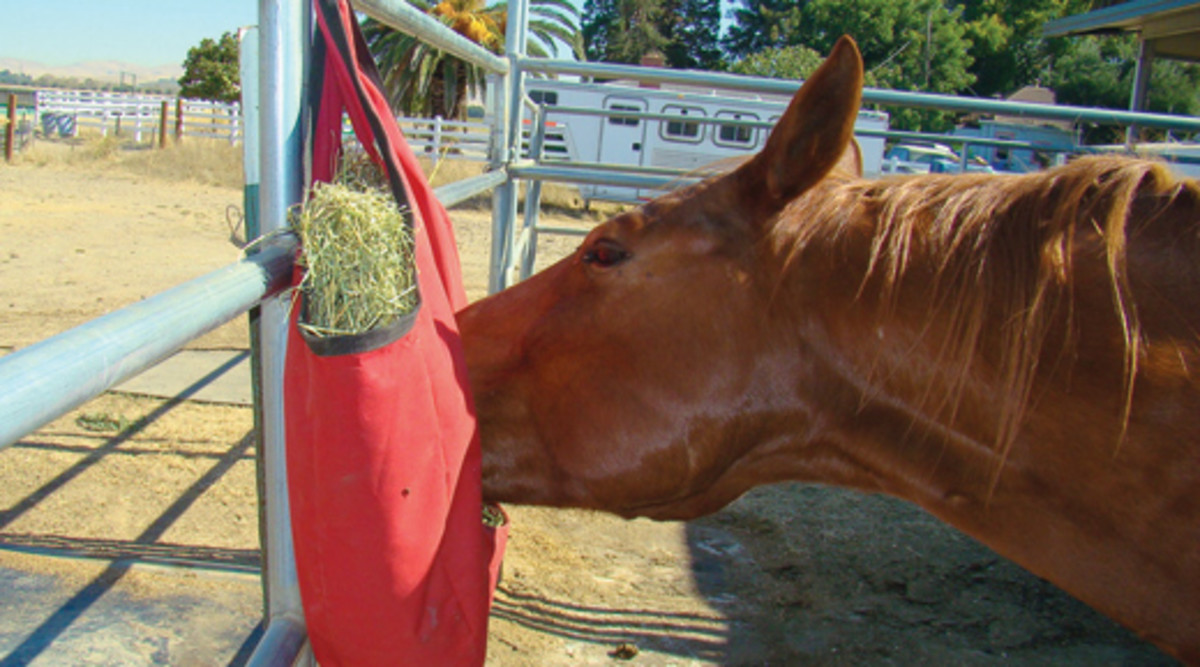
Looking for ways to reduce expenses without sacrificing essentials? Here are 10 ways to stretch your dollars.
[RELATED: 5 FINANCIAL TIPS FOR HORSE OWNERS]
1. Rethink boarding needs. If you board your horse, he might be just as happy and safe (but cheaper to keep) in a pen or pasture instead of a stall. Provide adequate weather protection, such as a run-in shed, enclosed shed, or even a grove of trees.
2. Trade labor for boarding fees. Talk with the owner of your stable about a barter arrangement, in which you perform weekly chores in exchange for reduced board costs. If that’s not an option, earn money by providing services – such as turnout, under-saddle exercise, currying, deworming, or giving supplements – when fellow boarders go out of town.
3. Buy hay in bulk. If you stable your horse at home, you probably pay much higher prices for hay than barns that buy in bulk. By teaming up with other horse owners, you can pool your resources to buy large amounts of hay at bulk prices. First, work out a reasonable delivery and storage system.
4. Reduce hay and feed waste. Weigh or measure feed, rather than just eyeballing the amount. Keep your hay out of the wind – it’s surprising how much blows away on a gusty day – and retie bales every time you get a flake. Keep grain, pellets, and supplements in rodent-proof containers, and monitor their use. If your horse doesn’t finish every last morsel, you’re probably overfeeding him and can cut back on his portions.
5. Shave bedding costs. Fluffy, foot-deep shavings are a luxury, not a necessity. For example, if you usually spread three bales of shavings a week, try reducing that to one. Extend bedding life by carefully cleaning out “road apples” and urine spots, and re-spreading the shavings daily.
6. Schedule preventive health care. Schedule regular, annual checkups for your horse to prevent expensive emergency veterinarian visits. If you use the same vet as many of your riding buddies do, schedule regular veterinary “clinics” (providing vaccinations, deworming, dental care, Coggins tests, and checkups). It’s cheaper if your vet makes one trip to treat many horses, rather than many trips to treat individual horses.
7. Evaluate farrier needs. Talk with your farrier about your horse’s trimming and shoeing schedule. Not all horses need their hooves trimmed every six to eight weeks year-round. And hoof growth generally slows in cold and/or dry weather, so you might be able to reduce your farrier visits during the winter months. Consider pulling your horse’s shoes in winter, if you don’t plan to ride.
8. Maintain your tack. Keeping your tack clean and oiled will save you repair and replacement costs, so clean your tack after each use. Old toothbrushes, rags, saddle soap, and glycerin are inexpensive supplies that will keep your saddle, cinch/girth, reins, and stirrups supple and strong for years to come. And don’t forget to clean the bit and saddle pad to enhance your horse’s health and comfort.
[RELATED: A PENNY SAVED]
9. Consider leasing your horse. You can reduce costs by leasing your horse full-time or part-time, depending on your budgetary needs. Ask a nearby trainer or riding instructor to help you assess a potential leaser’s level of horsemanship and trustworthiness.
10. Become a certified riding instructor or trainer. To earn money doing what you love, consider providing riding instruction or horse training to paying clients. Or, become a certified trainer for a clinician/trainer whose methods you’ve found effective. (For more information, see “Teach & Train,” above.)






